In 2021 I’ve read some remarkable books and been often asked for recommendation. The sporadic lockdowns in Hanoi allowed for home time (that is, book-reading time) and an opportunity to think about what I want to do with my life.
I recommend the following books because the authors blend personal experience, insider knowledge about specific industries and career reflections. Beside professional insights, they candidly bring to life their values, life vision and a sense of mission. Some books offer excellent discussions of national and regional politics, thus expanding your world views, helping you to locate where you stand in the larger context of history.
(1) What It Takes: Lessons in the Pursuit of Excellence – by Stephen Schwarzman (Private equity/Finance)
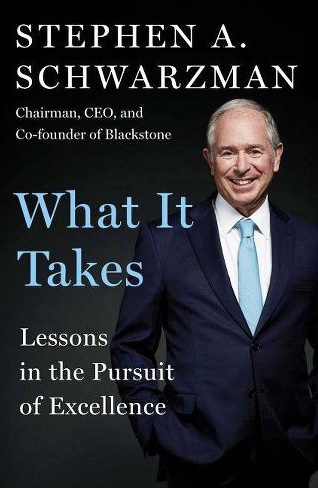
You’re unlikely to identify with this man: A white-male American whose grandparents and parents operated a successful business, Stephen Schwarzman went to Yale College and then Harvard Business School, landing key Wall Street jobs, building his own financial empire and philanthropic career. An emphasis on education, high ambition and relentless pursuit of excellence are some of the qualities you will need to succeed at a high level. What you get from the book isn’t just survival skills in the merciless world of Wall Street, but also professional wisdom and personal-growth nuggets for young and mid-career professionals not limited to finance and banking.
(2) Shoe Dog – by Phil Knight (Consumer products)

The founder of Nike comes clean about the birth and evolution of Nike from the original basement full of shoes to securing the pretigious global brand. The book is very true to Phil Knight’s quote: “Play by the rules, but be ferocious.” This is essential read for aspiring entrepreneurs.
(3) The Way I Heard It – by Mike Rowe (Media/Entertainment).

The TV show host of Dirty Jobs recollects the entrepreneurial stories told him in childhood, stories of those who built America. Along the way he shared the lessons learned from the early days in sales to the day he became host to the successful TV series, rubbing elbow with celebrities. Remember that the author still is a white male and didn’t have to face similar glass ceilings as do women and people of minorities. But, he wasn’t shy rolling his sleeves and labored in lowly manual jobs to get where he wanted. Candid, funny, deeply appreciative and proud of his country, Mike Rowe offers a refreshing breeze when there’s so much cynicism and trash talks about the American Dream these days.
(4) A Drinking Life – Pete Hamill (News/Publication).
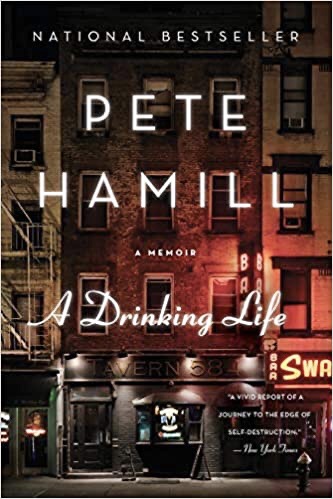
Rough, brutal, sensual, vigorous, New York City, love. Only a badass artist could write such a book. This memoir is a vivid photograph of the Irish American community in NYC at the dawn of World War 2 and the flowering of the counter-cultural movement. It’s a graphic picture of family life and romances deeply meddled by alcoholism. Drinking became the source for Pete’s creative wellspring as well as the reason for his many failures, failed marriages and near death experiences. This memoir transports me into the head of a recovered alcoholic and lets me explore his creative processes, his battle with depression and alcoholism. If your friends or family is struggling with alcoholism, this book can help you empathize with them. If you’re alcoholic yourself and struggling to be sober, this book is the testimony that the uphill battle can be won.
(5) The Elephant and the Flea: Reflections of a Reluctant Capitalist – by Charles Handy (Organizational behavior/Management).

There is so much to glean from this book. Charles Handy, an Irish guru of similar influence as Peter Drucker in America, is the one who popularized the famous concept such as “portfolio career”, “varied individualism” and “experience economy”. The title refers to an entrepreneur (an independent elephant) and an employee (a dependent flea), the tension between wanting to be free and needing to belong. The author describes how he coped with becoming an independent after 30 plus years working in organizations of some sort or another. He muses on the pros and cons of being an elephant versus a flea, predicting the types of jobs in the future economy. Written in 2001, this book is so prophetic in predicting the future of work. E.g. Emerging technology would help people work from home and the by product is bring work everywhere including vacation and produce more and more frenetic workaholics. A life without belonging and commitment to anything is prone to a life without responsibility to others, an invitation to selfishness and void of right and wrong. Wow, an idea like that! Just think about the current fad of overnight entrepreneurship at the expense of everyone else. It made me cringe to think about such example as Elizabeth Holmes of Theranos, who put the lives of millions of people at risk. Anyway, this book is full of interesting ideas for you if you’re consider the life of an elephant.
(6) From Third World to First: The Singapore Story 1965-2000 – by Lee Kuan Yew (Politics/Government)

Here’s a must-read for students of Southeast Asian history and politics. Mr. Lee played a monumental role in harnessing the complex dynamic of major world powers (i.e. The United States, the Soviet Union, People Republic of China) during the Cold War, and specifically, in the Southeast Asia arena. The book contains historical backstories that, if fully published in my country, would be unpopular. It’s a book by a rare, talented leaders. You might not agree with Lee Kuan Yew the statesman and his policies, but his strategic thinking is applicable even in personal finance as well as education at home, in school, and abroad.
(7) Autobiography of Benjamin Franklin – written by himself.

This wellspring of wisdom comes from America’s well-loved renaissance man, written in such an earnest manner. The stories of his childhood and transition into adulthood offer many lessons for us today: choosing friends, business partners and spheres of influence wisely; being industrious, professional and kind to everyone; keeping open eyes for opportunities should they arise; doing business should be accompanied by doing good for the society. This is a timeless classic.
(8) Narrative of the Life of Frederick Douglas – written by himself

A slave who learned to read and write, escaped to freedom, and became an ardent spokesperson against slavery. This earnest and powerful autobiography is a pioneering work of American Abolitionist movement and considered to be an early work of journalism. Douglass’ life is the testimony to the fact that being able to read and write well is the foundation leading to freedom. Freedom of thought, freedom of speech, freedom from institutionalized prejudice and discrimination.
(9) When Breath Becomes Air – Paul Kalanithi

I love this thoughtful, deeply moving memoir. The author was writing it while struggling with stage IV lung cancer, after a decade training as a neurosurgeon and about to secure his position at Stanford. The physical pain, the fear of not being able to see his first-born baby, are overwhelming. At times physically paralyzed and hallucinated, Paul was able to write the book in such lucid details. As much as Paul chronicles his childhood and transformation through stages of his career, he communicates to the readers something larger than himself. What makes life worth living to the last breath? What shall you do when the future is shut in your face? This book makes me pause to think “What do I truly want in life?” and “Am I doing the right thing to get there?” It can pose more questions about life than provide you answers.
(10) Life and Death in Shanghai – Nien Cheng
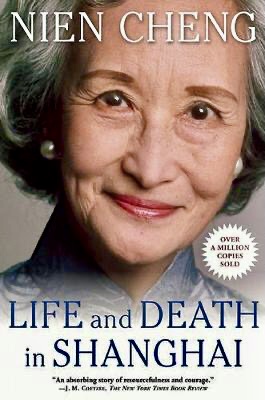
A survival story of true merit and tenacity: An upperclass Shanghai woman, instead of fleeing communist terrorism, chose to stay in her homeland and was wrongfully accused as enemy of the people. She was tortured in Mao’s reeducation jail for six years without the knowledge that her daughter was killed by zealous revolutionaries. If you’re interested in Asian politics, crisis and risk management, this intelligent woman can offer helpful insights. After all, she was able to make it to Washington D.C. and lived the rest of her life promoting public knowledge of the Cultural Revolution, one of the most horrific 20th-century disasters. It’s a poignant memory about Mao’s China and the impacts of the Cultural Revolution on generations of Chinese people, therefore can help us understand the Chinese identity in the 21st century.
(11) Darkness Visible: A Memoir of Madness – by William Styron

This is a personal account on some less-common manifestations of suicidal depression. I stumbled upon this book while searching mercilessly for books that talk about depression, the “darkness” I face from time to time. This book does service to friends and family of depression-prone people by pointing out the different shades of “the darkness”. Many people believe suicidal depression strikes someone when there must be a sorrowful event, when he or she is huddled in a dark room corner, but the reality doesn’t necessarily say so. For example, the author was at the zenith of his career when suicidal depression hit, almost collapsing on the stage where he received one of the most prestigious literary awards. By being aware of the symptoms, friends and family can better understand this complex concept, thus not deem or stigmatize it as a mental illness. They can initiate help before it’s too late. Fewer than 100 pages, this candid memoir concludes in an uplifting message that is worthwhile of your time.
The following books are rigorous economic studies being presented in a readable format and simpler style. It is not dumbing-down, however, so the books still require your close attention.
(12) The Financial Diaries: How American Families Cope in a World of Uncertainty – by Jonathan & Rachel Schneider (by Princeton University Press)
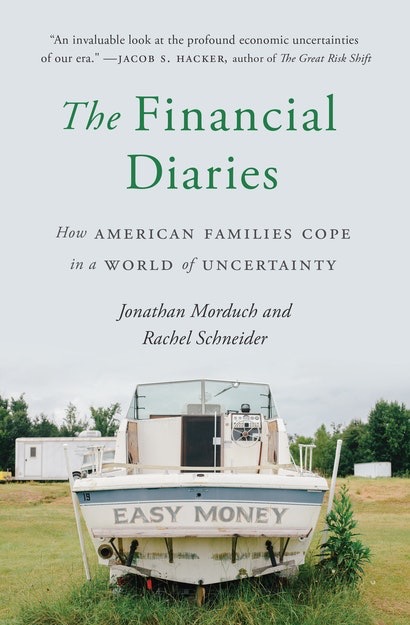
Having had a decade of friendship with Americans, I was curious how American people spend their money. This book is not a comprehensive answer but delivers fascinating insights. The authors followed 235 low- and middle-income American families throughout a year, observing the way they earn, spend, save, and borrow money, especially during times of distress and emergency. What surprised me was that many families prefer stability (where they are, as much as possible) to upward mobility, which is contrast with the ideal of the American Dream. There is so much disruption and risk in the job market and the economy that these families would prefer a steady paycheck (and stable work hours) to a career leap. The authors provide policy recommendations to remedy the situation. However, the most interesting part in this book is that not only will you look at graphs and statistics, but also meet real people in various walks of life. Unless you’re well-off and not living close to the edge, you might be curious to know their creative ways to stay afloat in a turbulent economy.
(13) Scroogenomics: Why You Shouldn’t Buy Presents for the Holiday – by Joel Waldfogel (by Princeton University Press)
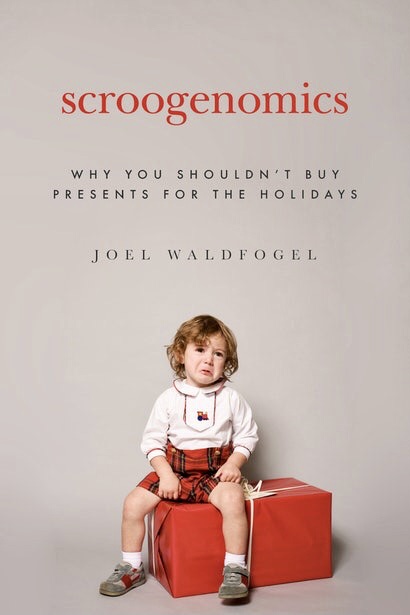
This book is a perfect gift for folks interested in behavioral economics and the “art” of gift-giving. The playful title refers to Scrooge, the main character in Charles Dickens’ classic Christmas tale “A Christmas Carol” (1843). Scrooge is extremely stingy and withholds every opportunity for charitable giving. The author argues that are economics reasons to be tight and strict with your money during the holidays. Every year, there are billions of dollars go to waste and debts accumulated due to mismatched intentions and needs. “Value destruction”, as he calls it, is when the receivers waste money and the receivers frown upon the gifts. Successful gift-giving which creates values for both the gift-givers and receivers requires certain factors, i.e. frequency of contact between the two parties, understanding each party’s tastes and preferences. In broader scopes than an act between persons, gift-giving can be seen in government-to-citizen, private institutions and charitable organizations’ perspectives. Is spending wasteful equally in all Christian countries? What is gift-giving like in non-Christian, former communist countries and Asia? Is more consumer spending good for the economy? Should you give cash as Christmas gift? What are viable gift-giving alternatives? This little book gives interesting answers. If you haven’t read “A Christmas Carol”, I highly recommend you read this cherished Christmas novella as well.
These following books refocus my mind on physical and emotional well-being when there’s rarely such a thing called “work-life balance”.
(14) Why We Sleep: Unlocking the Power of Sleep and Dreams – Matthew Walker

Neuroscientist Matthew Walker explores how sleep plays a central role in our physical and mental well-being. He answers many common questions about sleep, providing actionable steps for you to create a better night’s sleep, improve learning, prevent diseases and slow down aging. This book has made me seriously consider my sleep quality, daily schedule, and the next time I pick up a cup of coffee. The truth is that I often sacrificed sleep for work and other activities, and that is common in our sleep-deprived, burned-out society. That took a huge toll on my physical health and emotional state for a long time. Now I would miss things I could have been doing had I slept more, but that isn’t an excuse for my long-term health. You’ll reap practical advice from reading this book.
(15) Eight Steps to High Performance: Focus on What You Can change (Ignore the Rest) – Marc Effron
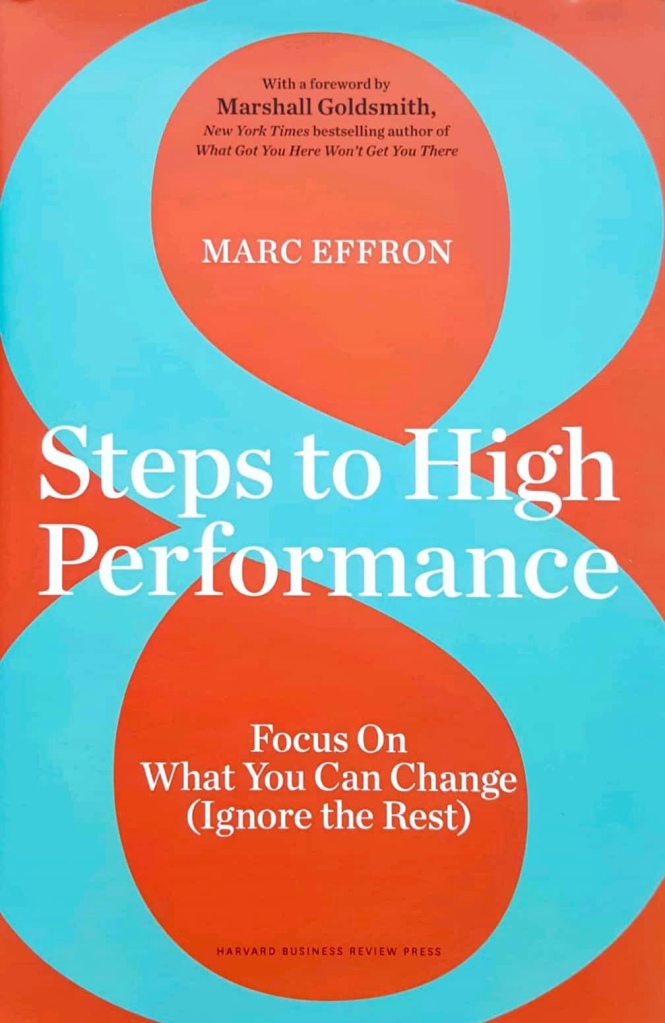
Before you read this book, I recommend listening to the interview with the author on Harvard Business Review IdeaCast. The author suggests research-based methods to separate what you can versus cannot control, upon which you should decide where to focus your energy and effort. Your Fixed 50% (core personality, IQ, body, socioeconomic background) is unlikely to change. Your Flexible 50% includes your goals, your behaviors, your network, your presentation, your sleep management, etc. If you focus on these flexible areas, you’ll save wasted effort and energy as a result. The book provides self-assessment and practical steps to improve performance which I think not limited to corporate settings. A college undergrad or graduate student can reap powerful takeaways from this book.
(16) Seven Strategies Questions: A Simple Approach for Better Execution – by Robert Simons (Harvard Business Review Press, 2010)

The book pinpoints the obstacles to corporate strategies, offering a roadmap of seven questions to execute corporate strategies more effectively. If you work in a large company or a business on the scaling phase, the approach in the book might be particular helpful. Who is your primary customer? What critical variables are you tracking? How are you creating accountability for performance on those variables? How do your core values prioritize shareholders, employees, and customers? What strategic boundaries have you set? How are you generating creative tension to drive innovation? Extensive examples including Google, General Motors, Mary Kay, Starbucks, Amazon, will generate insights into successful corporate management. However, I’d love to see more examples of overseas branches in which cultural dynamics play an important role. Also, for entrepreneurial ventures in the early stages, the struggle to find the business model and strategies that works might prompt the need for different questions. Still, this is a good book for leaders in organizations who want to revise their corporate strategies, understand their options in order to make tough but effective decisions.
Literature and Poetry
(17) The Tale of Kieu – by Nguyen Du (translated by Huynh Sanh Thong, Yale University Press)
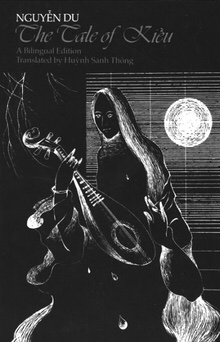
This 19th-century epic poem is a classic and the finest achievement of Vietnamese literature. It is the story of Thuy Kieu, a beautiful and talented young woman who, in trying to save her father and younger brother from prison, is forced into marriage and then sold into prostitution. After many trials and tribulations, she finds peace and is finally reunited with her family. What stands out is the supreme portrayal of the society, main characters, heroes and villains. It’s subtle, sophisticated and shows a keen observation of different groups of people in society at the time. Many traits and characteristics of the people in the book are still used by Vietnamese people nowadays in the art of “reading people”. I highly recommend the Yale University Press dual-language edition (translated by Huynh Sanh Thong). It’s by far the best translation I’ve read. The rich vocabulary, even words a little archaic and outdated, can enrich your language. It has lots of footnotes and explanations of cultural references so that you won’t get lost in its 3254 verses.
(18) Inside Out and Back Again – by Thanh Ha Lai
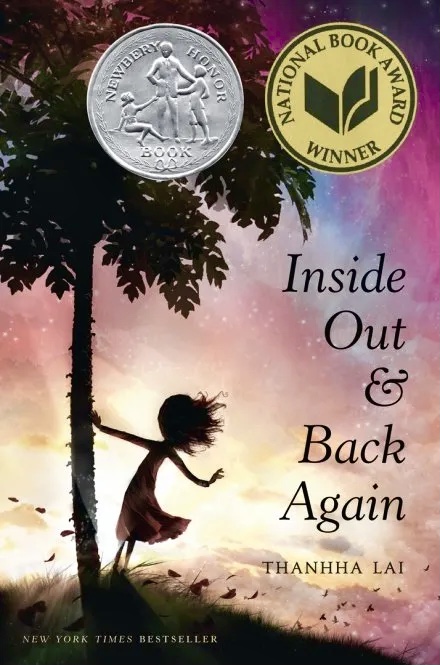
In her beautiful verses the Vietnamese-American author chronicles a Vietnamese girl’s stories of love and loss, a traumatic immigration from war-torn southern Vietnam to the United States at the Fall of Saigon. She was forced prematurely into adulthood in a foreign land, overcoming humiliation and prejudice. Half-fictional, half-autobiographical, this is a graphic story of lost innocence, and also a testimony for courage, determination and resilience.
(19) The Quiet American – by Graham Greene
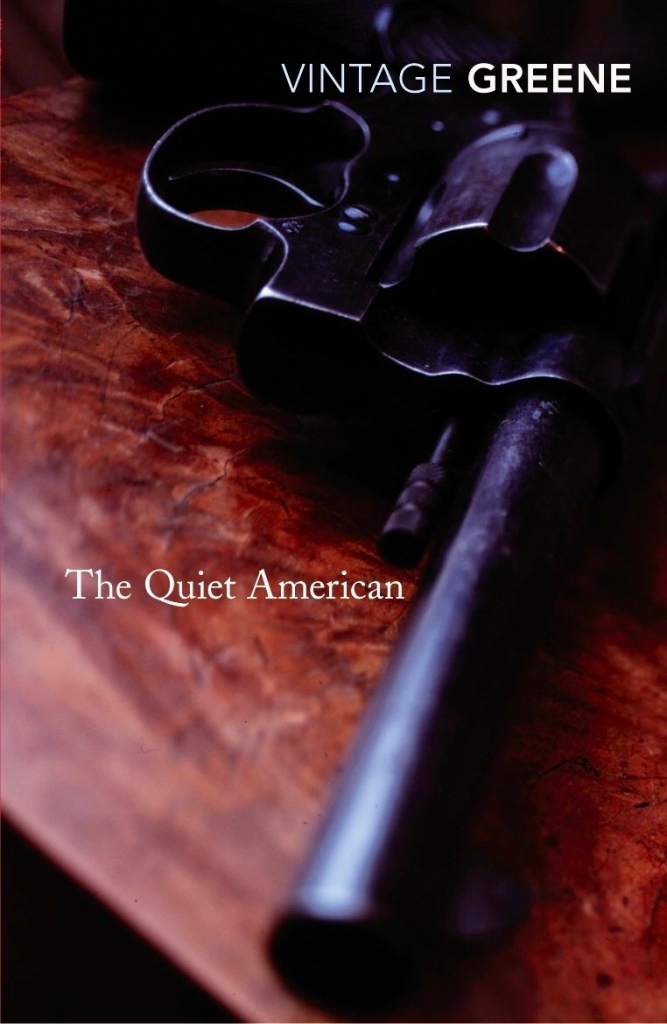
This historical novel (1955) is famous for being prophetic in predicting the outcome of the Vietnam War. It can spark lively discussions about the Cold War politics and U.S. foreign policy. Set in Vietnam during the breakdown of French colonialism and early American meddling in Southeast Asia, the book revolves around a love triangle between a seasoned and cynical British correspondent (narrator), a young Vietnamese woman, and a young idealistic American CIA agent. What political side will the main characters take? What will come out of the love triangle during wartime? It’s almost an allegory for the forces involved in the conflict of ideologies. Readers come out of the novel with disillusionment of war, but also a little wiser because of it.
(20) The Heart is a Lonely Hunter – by Carson McCullers

One of the most depressing novels I’ve ever read, but it’s so beautiful, humane and thought-provoking. Set in a lonely small town in Georgia, a southern state in America, a deaf-mute becomes the unlikely soulmate of four lonely people: An observant restaurant-owner trapped in his marriage and inhibited desires; an itinerant, socialist radical being ostracized by the poor, conservative townsfolk for his drunkenness and beliefs; a dreamy tomboyish girl desperate to grow up and eventually thrusted violently into adulthood; a Marxist African-American doctor frustrated with his people’s blindness to racial injustice and prejudice. They’re restless, alienated and unable to communicate with others about their inner worlds; they project their angst and loneliness on the tolerant “listening ear” of the deaf-mute. Their transgressive thoughts are in stark contrast with the deaf-mute, whom they consider having “god-like qualities” and a rare gem among the white people.This debut novel captured the subtlety and nuances of loneliness with an incredible observation of humanity. I was astonished to learn that McCullers was only 23 years old at the time. If you’re curious about Southern Gothic sub-genre in American literature, this book is for you. It evokes many issues such as poverty, racial and social inequality, the treatment of the minorities, personal and collective struggle with loneliness, lost innocence, individualism, communication and self-expression. I would recommend it highly to students of American Studies.
(21) As I Lay Dying – by William Faulkner
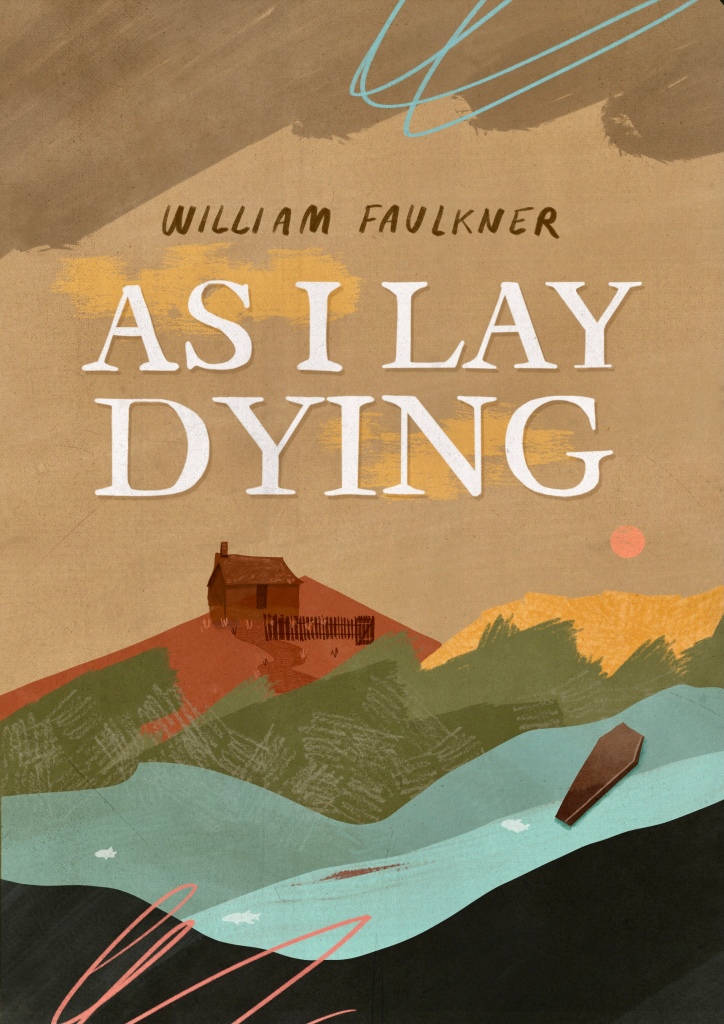
If you’re interested in the American literary canon, at some point you’ll come across William Faulkner. I wish you the best of luck. This book is not unreadable; the plot not complex; the language not sophisticated. However, Faulkner used stream of consciousness so you will get into the heads of 15 different narrators who are going through the same event but having different perspectives. Their actions and utterances are not always congruent with their interior monologues. Only by reading till the end will you piece together the plot and relationships between the characters. Unlike John Steinbeck’s obvious sympathy for poor folks, Faulkner’s attitude toward the poor southern folks in this story is not clear to me. I was left with a “What the heck is going on here!?” This fascinating masterpiece will pick your brain, at times making you frustrated but is going to reward you if you put effort into reading it.
Finally, the book that I will return to read again and again.
(22) The Snow Leopard (1978) – by Peter Matthiessen
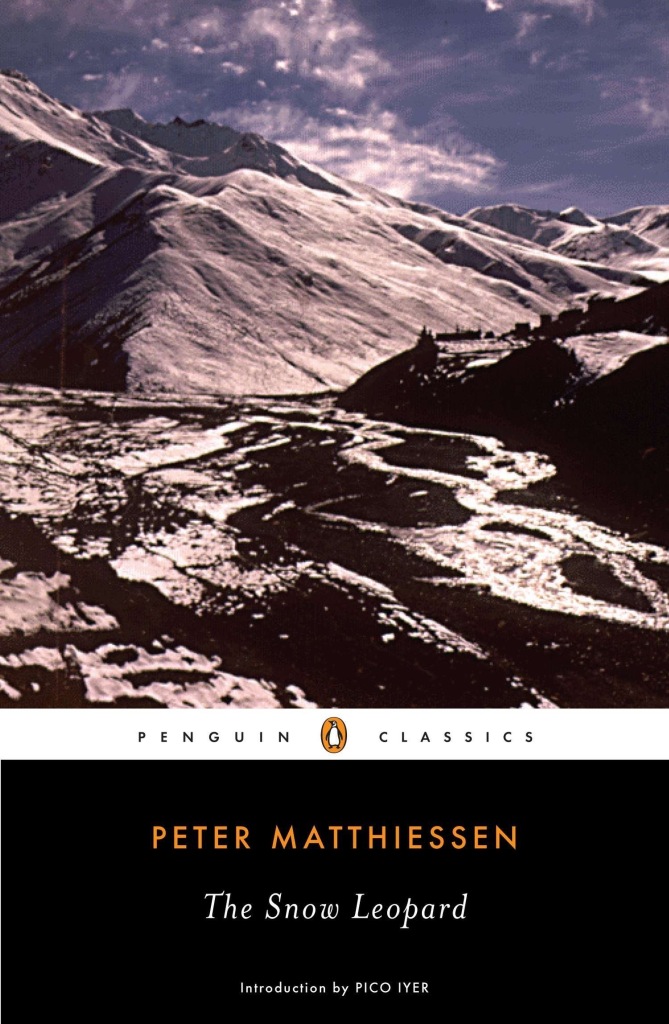
In 1973, Peter Matthiessen went on an expedition with wildlife scientist George Schaller to the Tibetan Plateau of the Himalaya. The trip’s objectives were to study the blue sheep, spot the elusive snow leopard, and visit the Crystal Monastery and its Buddhist lama. This account of the journey is written in the form of a day-to-day journal, full of wonders and is so much more than a mere travel book. Deeply meditative and dotted with some of the most beautiful, vivid details of mountainous creatures and their habitats I’ve ever read, this book shows the intelligent mind and observant eyes of a top-notch writer. The author frequently digressed and mused on his marriage, his wife who had died of cancer just before the adventure commenced, and his son waiting at home thousands of miles away. Thus, the book is also Matthiessen’s meditation on life and death, love and loss, memory, acceptance and healing. The search for the snow leopard in the end brought more spiritual insights than just scientific and wanderlust satisfaction. Certain descriptions of the indigenous people come across as exotic and somewhat outdated. Nonetheless, the book can be an excellent historical record of the land, the culture and the peoples of the Himalayas, many parts of which are lost permanently. If you’re going on a mountain trip or planning a getaway from the urban hustle, please bring along this book. If you’re visiting Central and South Asia, you can’t miss this book. I’m sure I’m gonna come back to this book again and again as I grow older through the years.
So here we are, the end of 2021 with lots of turbulence, hard work, love, awakening. I hope you will join me in exploring the miracles and new lessons of 2022. Please let me know what you’re reading!

Hi Thang, thanks for sending me the book list. I have read a few of them or perhaps a quarter of the ones listed…I am reading A Tale for the Time Being by Ruth Ozeki and Think Like a Monk by jay Shetty. I have been in Vancouver for 18 months now and have not been working! just reading and writing in my journal…my adventures and misadventures, especially in Japan about 28 years ago have not been written about or published, and I avoid online writing or teaching…i go to church and read Scripture and walk and buy groceries almost daily! i chose not to buy or rent a car so it is difficult in a big city, but my current boyfriend has one, but he lives far away, and we see each other once or twice a week only! He is coming today so we will go to a friend’s home for a Christmas open house. Do you still attend church and/or believe in these dark covid times? I enjoyed talking to you in Hanoi, and I hope things are going well with you in Hanoi, and your work and love life are rich and full if possible. Happy holidays, Lauren
Sent from Outlook
________________________________
LikeLike